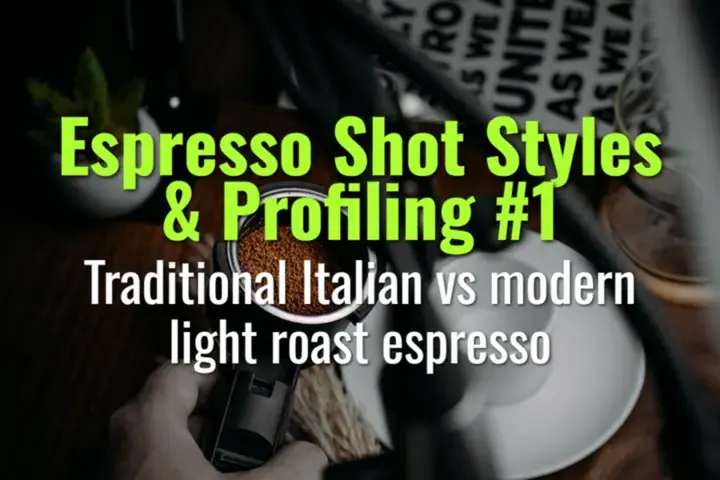Traditional Italian vs modern light roast espresso
The key differences between traditional Italian espresso and modern light roast espresso, including roast profiles, extraction parameters, and sensory outcomes.
- Coffee Basics Nerds
- 2 min read
Article 1 of 12 in Espresso Shot Styles & Profiling/

Traditional Italian Espresso
- Roast Profile: Medium-dark to dark roast.
- Flavor: Bitter chocolate, roasted nuts, caramelized sugars, low acidity.
- Brew Parameters:
- Ratio: 1:2 (e.g., 18 g in → 36 g out).
- Temp: 88–92°C.
- Pressure: 9 bar, constant.
- Sensory Style: Dense body, crema-rich, comforting, consistent.
- Cultural Context: Focus on tradition, repeatability, and balance with milk drinks like cappuccinos.
Modern Light Roast Espresso
- Roast Profile: Light to medium-light roast.
- Flavor: Bright acidity (citrus, berry), floral aromatics, high sweetness, lighter body.
- Brew Parameters:
- Ratio: often 1:2.5 – 1:3 (higher yield).
- Temp: 92–96°C (to extract lighter roasts fully).
- Pressure: declining or profiled flow common.
- Sensory Style: Clear, complex, terroir-driven flavors.
- Cultural Context: Specialty cafés emphasize origin expression and innovation.
Key Contrasts
- Body vs Clarity: Italian espresso = heavier mouthfeel; modern = lighter, brighter.
- Consistency vs Exploration: Italian style prioritizes tradition; modern style celebrates diversity of flavor.
- Machine Use: Traditional = simple 9-bar extractions; modern = pressure/flow profiling, advanced grinders, precise data logging.
Practical Implications
- Italian-style espresso pairs well with sugar and milk.
- Modern light roast espresso often enjoyed straight to highlight origin.
- Baristas must adjust brew ratios and temperatures significantly between the two styles.
Summary
Traditional Italian espresso focuses on darker roasts, crema, and balance, while modern light roast espresso emphasizes acidity, clarity, and terroir. Both are valid approaches—one rooted in tradition, the other in innovation.